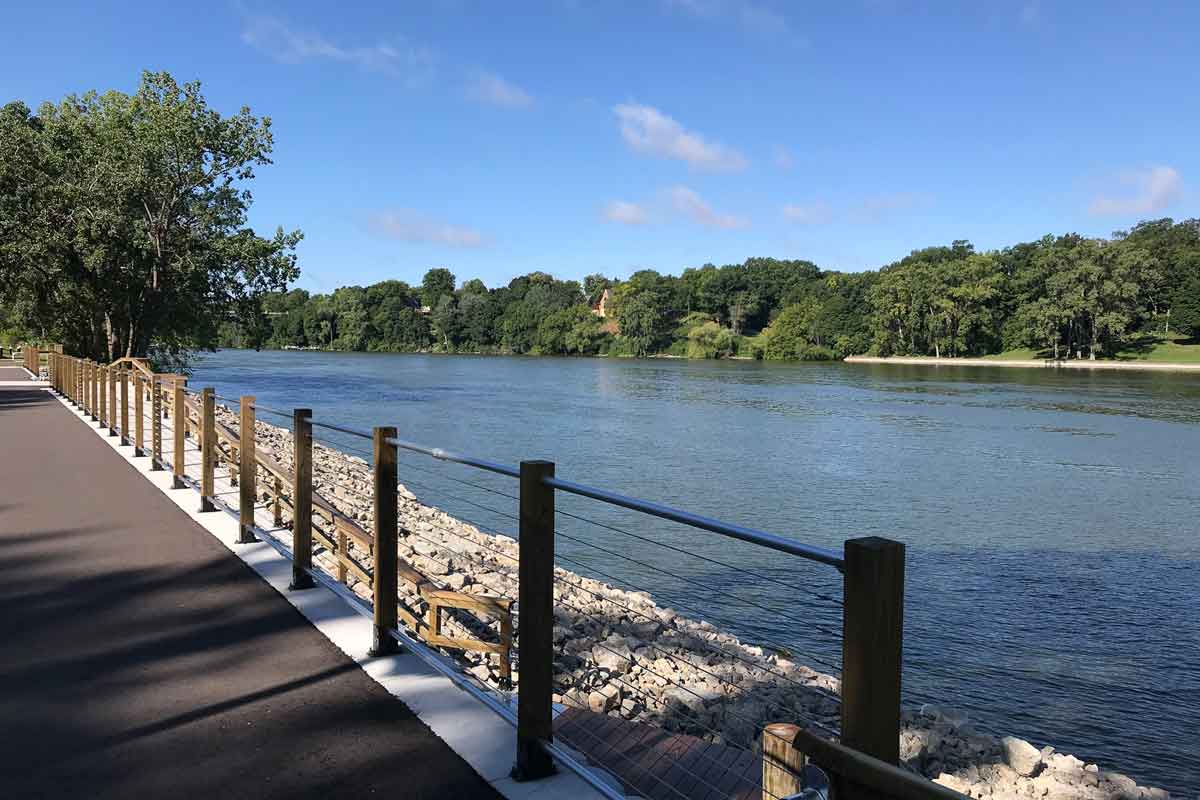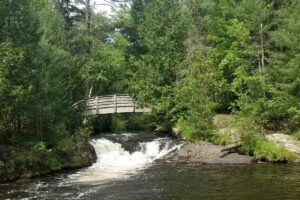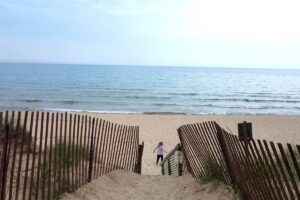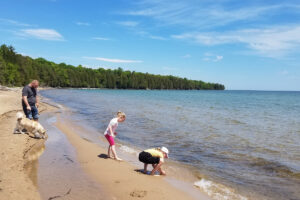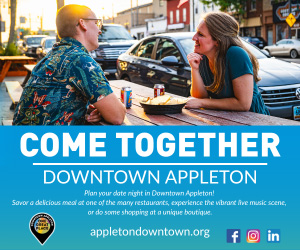Finding local disability-friendly ways to get out in nature can be a challenge for families. We’re working to make it a little easier! Here are some fantastic locations for hiking with your entire family.
READ MORE: Best Playgrounds in the Fox Valley for Kids with Safety Needs
Why Hiking?
For parents of kids with disabilities, getting out in nature can feel like an overwhelming task, but the benefits of outdoor exercise, fresh air, and sunshine are even more important for adults and children with disabilities.
A study by Stanford University psychologists found that people who hiked 90 minutes in a natural setting experienced a significant positive change in brain activity compared to people who walked in urban environments.
Since people with disabilities and their caregivers are at a higher risk of depression, planning time outside is as critical as a healthy diet and exercise. Hiking is one of the cheapest, easiest ways to work nature time into a family’s schedule.
Where To Go
Click trail name to jump!
- Urban and Suburban Settings
- Rural Settings, Nature Centers, Parks
Planning For Your Hike
Jennifer Allen, mom of a child with spina bifida, blogs for Cascade Mountain Tech, an outdoor recreation equipment company. Jennifer has plenty of experience hiking with her three children, and has the following recommendations:
- Just do it. Allen writes that even though it may be difficult at first, hiking is worth the effort. Prioritize time outside for your family.
- Prepare ahead of time. Allen recommends explicitly teaching children what to expect on hikes. Practice “hiking” in your neighborhood or even just in your yard. Think about what barriers might be in place for your family and make a plan. Common barriers include
- Fear of wildlife. Educate yourself about the wildlife you might see along the trail. Hike It Baby, a club that promotes hiking with children, has a comprehensive article on staying safe when encountering wildlife on the trail. Practice their safety tips with your family before you go. Connect with your local Hike It Baby group to meet up with other parents.
- Fear of getting lost. Definitely don’t start with Yellowstone! Small hikes near home on well-marked trails are your best bet. Rails-to-trails routes are often the best way to start, since it is almost impossible to get lost on that type of trail, and they are generally well-marked. If you are concerned about your child wandering off, consider a lead and choose trails with natural barriers on each side, such as thick vegetation or boardwalks.
- Lack of knowledge about trail etiquette. The Wisconsin Department of Natural Resources publishes a booklet about trail etiquette and safety. Research and practice the expectations for hikers with your family before you go.
- Low stamina. This can actually be one of the highest barriers to overcome. Children and adults today do not have many opportunities to practice long periods of walking without stopping. Although your child may easily cover a mile while playing, that kind of distance can feel overwhelming. If you are concerned about stamina, use maps and location apps to point out spots to rest and try to plan hikes that terminate with a motivating activity, like a beach, ice cream shop, or playground.
- Physical strength. Know your limits and look for physical supports. Consider bicycles, backpack carriers, and all-terrain strollers for those who may not be able to make it far on their own. Two of the local nature centers, Mosquito Hill and 1000 Islands, have wheelchairs that can be borrowed for your visit.
- Research the trail. Allen writes, “Trails marked as kid-friendly may not be wheelchair accessible. Trails marked as wheelchair accessible may not be smooth enough for a person with a visual impairment. A perfectly smooth trail that runs along a river may not be ideal for a child on the spectrum with an irresistible draw toward water. National and state parks often offer the most accommodations, but trails in any location may have what you need.” Choose trails that work best for your family’s needs. And don’t be afraid to call park offices to inquire about specific trails and accommodations.
- Be flexible. Don’t be discouraged if the hike doesn’t go your way, Allen writes. Nature is unpredictable, and you may find a tree blocking your way or a washed-out trail. The important thing is to get out there. Syren Nagakyrie, disability advocate and founder of Disabled Hikers, writes that “…for many disabled people, slow, attentive experiences are the only way to experience nature.” Teach your family to enjoy their time outside mindfully, rather than focusing on how far or fast you can go.
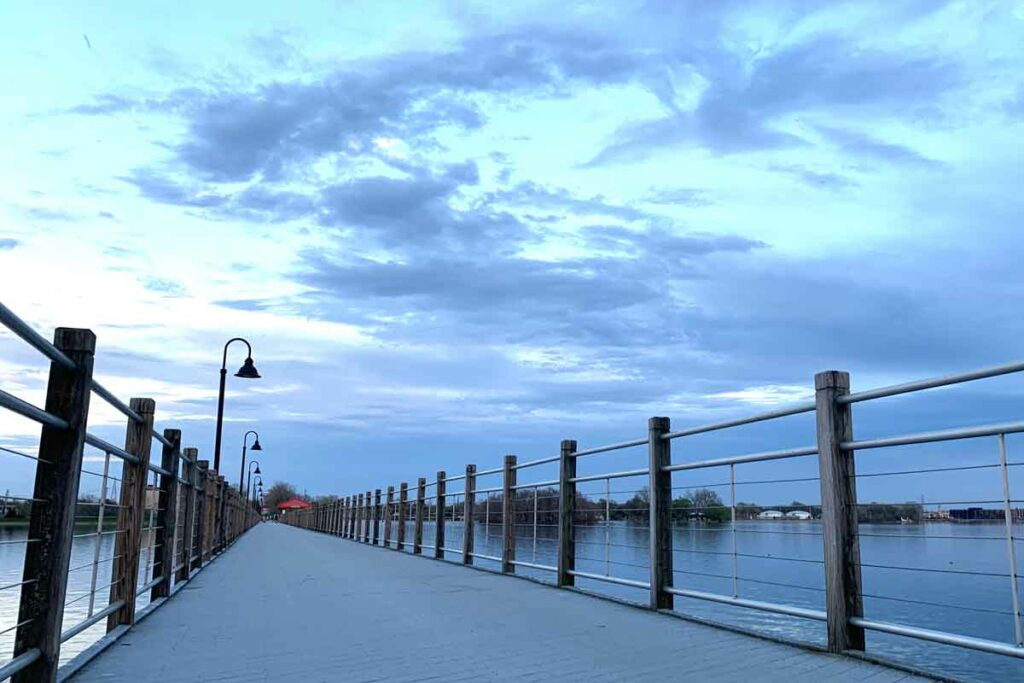
Where To Hike In The Fox Valley
Now that you are prepared for your hike, it is time to choose a trail and get started! The following are local trails with a variety of accommodations.
Urban and Suburban Settings
You don’t have to hop in the car for a long journey to get to these trails, which are perfect for brief, easy hikes for beginners, young and old. These trails are paved, which makes it easier for wheelchairs, strollers, and bike trailers. They are well-used but not typically crowded.
Newberry Trail, Appleton – This urban trail runs along the Fox River in downtown Appleton and passes through Telulah Park, with access to bathrooms in warm weather and good lighting. It connects to the Appleton trail system, allowing users to explore trestle bridges and downtown amenities, as well as views of eagles, pelicans, ducks, geese, and many other species. The trail is a there-and-back hike. Parking is available at Telulah Park.
Loop-The-Little-Lake, Neenah/Menasha – There is so much to see on the Loop-The-Little-Lake trail! The trail includes a large trestle bridge over Little Lake Butte Des Morts with spots for wildlife viewing and fishing. The trestle floor can be a bit uneven, but there are high fenced railings all along the trail that make it safe for young children. Muskrat, herons, ducks, loons, eagles, and many other species are on display. The full trail runs for 3.5 miles across the trestle and around the lake’s southern end, but a simple walk back and forth across the lake on the trestle bridge is an excellent option for beginners. Parking and restrooms are available at Fritse Park and Smith Park, and even more, parking is available at Arrowhead Park.
Apple Creek Trail, Appleton – A little farther outside of town is the Apple Creek Trail, stretching between Edgewood Drive and Mead Street. Scheels USA Youth Sports Complex, located at 3300 E Evergreen Dr. The trail has portable restrooms and garbage receptacles placed at intervals but does not intersect with a park or indoor facilities. The trail winds through residential areas but also offers natural and wildlife views. It runs 3.9 miles, but with parking at the center of the trail, it is really a “there-and-back” kind of walk.
Old Stone Bridge Trail, Appleton – Connected to a walking path around Fox Valley Technical College, the Old Stone Bridge Trail is one of Appleton’s best-kept secrets. The two trails together consist of 3.4 miles of paved trails over a variety of ecosystems, perfect for wildlife viewing. Parking is available at the trailhead at 3404 W Brewster St. One downside to this trail is that there are no restrooms along the trail, though there are businesses near the Tech at several points.
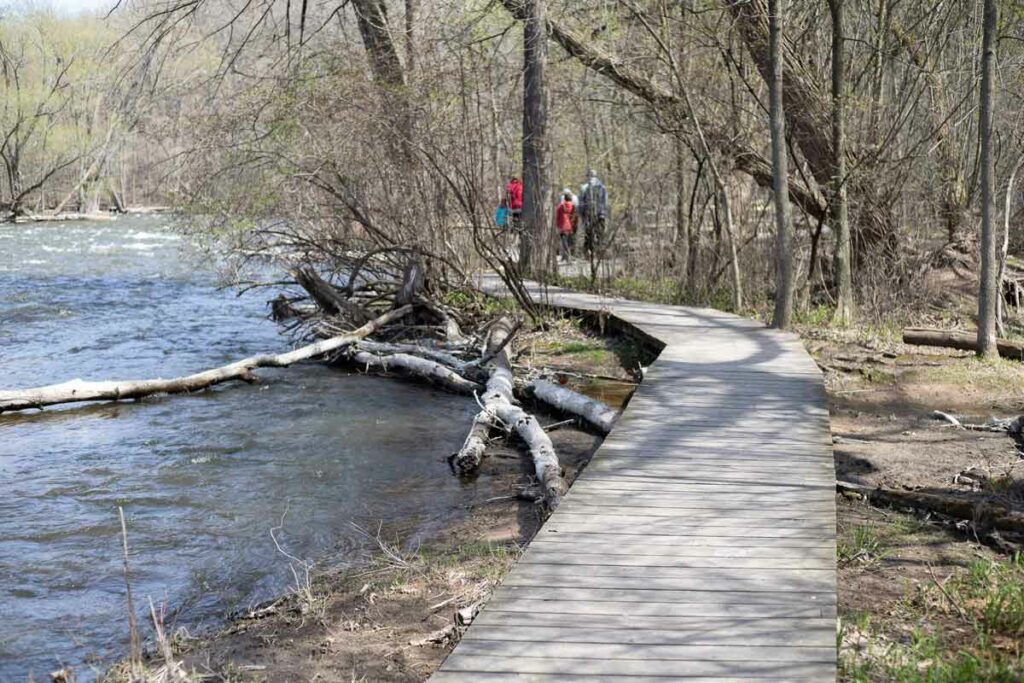
Rural Settings & Parks
If you are ready for a quieter, more natural setting, there are many options for accessible trails at natural areas and state parks. While these trails are paved and designed for accessibility, it is always a good idea to call the park or natural area ahead of time to check on the state of the trails.
High Cliff State Park, State Park Road, Sherwood – High Cliff is popular and can get downright crowded on summer weekends, but the Butterfly Pond Trail loops make the trip worthwhile. The trail is easy to find, with parking right off the main entrance road and near the beach. Butterfly Pond Trail has two short loops: a 0.4-mile loop and a 0.7-mile loop. While short, the trail packs in multiple ecosystems and plenty of wildlife. High Cliff can also be enjoyed from the car by taking the paved roads up and around the cliff itself. Stop at the statue of Red Bird for a stunning view of Lake Winnebago and check out the new ADA-accessible playground at the top of the park.
1000 Islands Environmental Center, Beaulieu Court, Kaukauna – The 1000 Islands Center building is open Tuesday – Friday from 8 am to 4 pm and Saturday from 10 am to 3:30 pm. The building and boardwalk are wheelchair and stroller accessible, and the organization actually has a wheelchair and walker available to borrow. The center has a paved trail (the Black Top Loop, 0.75 miles) that connects to 2000 feet of “barrier-free boardwalk.” While initially designed for individuals with limited mobility, we should caution that “barrier-free” means no railings or walls, and the boardwalk is only 5 feet wide, making it difficult to pass others going the opposite way. Individuals with difficulty controlling their direction should avoid this area. In addition, at points along the Black Top Loop, the cracked pavement has been filled in with crushed gravel. But the boardwalk and trails definitely get you close to the river, with incredible wildlife views, and remain relatively easy to navigate. The center also has many family-friendly educational programs throughout the year.
Mosquito Hill Nature Center, N3880 Rogers Rd, New London – Building open 8 am to 4:30 pm, Tuesday – Fridays and 10 am to 3 pm on weekends. Masks are required in the interpretive center and accessible bathrooms. Although the interpretive center is, unfortunately, closed at this time, Mosquito Hill does have an accessible trail, the All People’s Trail. Doesn’t meet ADA requirements because of the changed grade requirement. This paved 0.6-mile one-way trail passes two ponds, skirts the forest, and passes through the prairie. Natural exhibits are marked. A push and electric wheelchair are available for check-out at the center. Binoculars are available for check-out. Junior naturalist program for children.
Brillion Nature Center, W1135 Deer View Rd, Brillion – While the focus is on supporting elderly visitors, anyone with limited mobility can enjoy the accessible Cottonwood Trail (0.6 miles) or the Marsh Platform Trail, which ends in at the wildlife viewing platform. Note: While the trails are open daily from dawn to dusk, the nature center building is generally closed on the weekends.
Curious about other accessible trails in Wisconsin? Head over to Trail Link’s map of accessible trails in Wisconsin and create a free account.


